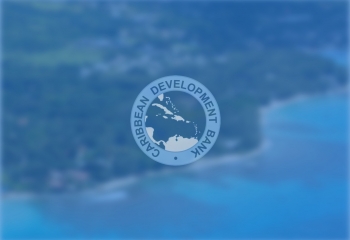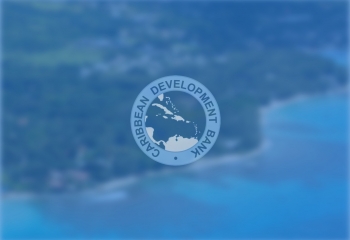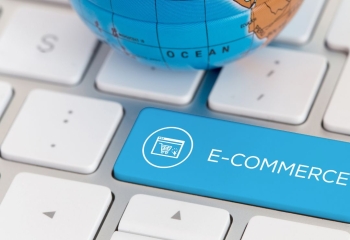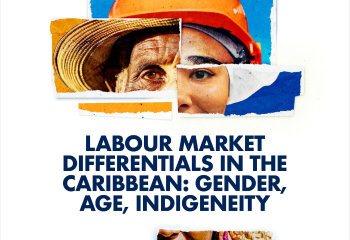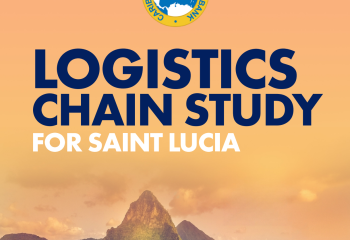Sustainable and Resilient Private Sector is Key to Sustainable Development and the 2030 Agenda
The Case for a New Deal
By way of introduction, allow me to draw on 20th Century history. In the 1930s US President, Franklin D. Roosevelt proposed a series of projects, programmes, financial reforms, and regulatory changes to revitalise his country’s economy in the face of the Great Depression. It was called, “The New Deal”. His objective was to spearhead economic recovery, reform the financial system, tackle poverty, and reduce unemployment.
While I would not debate the specifics of his proposals, the principle of reconfiguring the ground rules for the involvement of key stakeholders in the arrangements that shape economies and societies after a major upheaval like the Great Depression is appropriate. Therefore, in the wake of the massive disruption wrought across the region – and the world – over the last three years by the COVID-19 pandemic we must revisit our fundamental roles and responsibilities in economic development. Simply put, we need a “new deal”.
The impact of COVID cannot be understated. The pandemic was a veritable perfect storm, as it curbed demand and at the same time wiped out supply. Within the Borrowing Member Countries (BMCs) of the Caribbean Development Bank (CDB) – lockdowns and restrictions on travel significantly curtailed economic output. When COVID hit in 2020, real economic activity contracted by 7.6%. The Region’s small size and openness to trade make it inherently vulnerable to macroeconomic shocks. However, the high level of export concentration significantly reduces our ability to recover from these shocks. The impact of the pandemic on all of the region’s economies has been unprecedented, but the effect on service-oriented economies was particularly devastating resulting in declines as high as 18.8%. Commodity-based economies did not fare much better, registering contractions of as much as 13.5%.
Behind these numbers were lives severely disrupted by reduced remittance flows, loss of income or income reductions, socio-economic obstacles to the delivery of education, and uneven access to health services. Poverty alleviation, health, education, and social safety protection systems were adversely impacted, and more than 6,000 lives were lost. In the face of the catastrophe, the effectiveness of governments’ responses was constrained.
You may recall, in medical spheres there was a great deal of preoccupation with the devastating impact of the virus on victims with pre-existing conditions. In the development arena we can attest that it was similar for economies, like ours in the Caribbean with a legacy of structural weaknesses. Our pre-existing conditions such as “impaired infrastructure”, “implementation incapacity” and “institutional infirmity” left us with little or no immunity to COVID.
Then, just when we began to speak of recovery, right on the heels of the pandemic came the Russia-Ukraine conflict which, even as we speak, is impacting commodity and financial markets, increasing inflation, disrupting supply chains, and heightening food insecurity. If we can learn anything from recent events, it is that we cannot prevent the shocks. However, we can withstand their impacts if we prepare our economies by building resilience. To be clear, we need to build resilience of the economy – people, institutions, and markets. But resilience takes investment. This is why, we need “a new deal”.
Defining Sustainable Development
The United Nation’s 2030 Agenda for Sustainable Development established 17 Sustainable Development Goals (SDGs), agreed to by respective governments, as benchmarks for improving the welfare of societies, tackling climate change, and preserving natural resources. However, if the Region is to achieve any of the SDGs, we will have to revisit our approach to this critical mission and recast our roles.
No doubt in your various spheres you have heard about the SDGs, and you might have categorised them as the concerns of the Public Sector and institutions like CDB. But beyond the acronyms and statistics frequently recited in the development dialogue are people, communities, organisations, and businesses. Sustainable development is really about improving the quality of life and capabilities of the Caribbean people by utilising our resources in a manner that achieves current objectives without compromising the prospects of future generations.
At CDB, we believe that to achieve sustainable development we must build a resilience ecosystem, one that encompasses all dimensions of resilience including social, financial, environmental, institutional, and productive capacity resilience. In doing so, our areas of focus and facilitation include food and nutrition security, energy security, climate security, education and skills development, social protection, digital transformation, and economic diversification.
We run the gamut because sustainable development must be holistic. This allows us to preserve definition of the system while recognising the dynamics of motion over time. To do so, holistic development has to be driven by multi-sectoral, multi-disciplined, and multi-faceted forces. This suggests, therefore, that no single entity, individual, or group can accomplish sustainable development on its own. It can only be achieved through partnerships.
Let me break it down to dollars and cents, a language I know this audience speaks fluently. Estimates indicate that approximately USD100 billion is required over the next decade to finance the scale of initiatives necessary for building resilience and achieving sustainable development in the Caribbean. Between 2023 and 2030, the deadline established by the UN for achieving the SDGs, the region will require at least USD40 billion for Sustainable Energy, USD22 billion for Water and Sanitation, USD11.5 billion for Transportation, USD13 billion for Agriculture and Food security, and USD12 billion for Digital Transformation. Our governments cannot do it on their own. Even in collaboration with development financing institutions like CDB, it would be mission impossible for the Public Sector given the high debt levels and shrinking fiscal space. My friends, this level of financing will only be harnessed through partnerships, and this presents ideal opportunities for business and industry.
Therefore, the conversation I want to have with you today is about reimagining the role of private enterprise in the delivery of sustainable development outcomes.
The Role of the Private Sector
Now you might be thinking, why should I get involved? Sustainable Development is not “my business”. I am calling on you to re-engineer your mindset about who is responsible for what. The basis of my appeal is simple, Sustainable Development is too important for it to be the exclusive purview of our governments.
In fact, the President and Chief Executive Officer of the World Business Council for Sustainable Development (WBCSD), Peter Bakker has said his aim is to “position the SDGs at the heart of business strategy”. He argues that “business has a critical role to play as a source of investments and as a driver of technological development and innovation, not to mention as an engine for economic growth and employment.”[1] Referencing Climate Change, a focal point of the SDGs and a major global concern, Bakker asserts that “business is the best implementation partner for governments around the world as they strive to hit their climate targets”.
The WBCSD spearheaded the Low Carbon Technology Partnerships Initiative to bring together businesses and other partners from across to globe to accelerate the development and deployment of low-carbon technologies. This wasn’t about charity, it was about big business as, at inception, the initiative had the potential to deliver as much as 65% of the necessary emission reductions; generate between USD5 and USD10 trillion in investment; and create 25 - 45 million jobs globally each year.
This is an example of a development challenge being translated into a goal with minimal policy uncertainty that was deconstructed into an essential trifecta (process triangle) for effecting development. I refer to the set of investment activities necessary to achieve the goal, access to adequate and affordable finance to fund these investment activities, and an implementation environment rich enough to provide a rational basis for the alignment of stakeholder interests.
In this Baker illustration, the private sector was called on to partner by supporting conservation, pursuing nature-based solutions, and prioritising sustainability in operations and decision-making. Broadening this to include other development challenges implies that the notion of sustainable business must become mainstream, financiers must unlock the capital that will drive sustainable development solutions, and governments and business must work together to achieve goals that address development challenges.
This makes private enterprise an indispensable factor in the sustainable development equation. The message is clear, development has to be a shared responsibility, one where individual stakeholder egos are subordinated through the notion that development of the whole will always imply development for all!
The Emergence of Environmental, Social and Governance (ESG)
The call for greater Private Sector involvement in forging a sustainable future for countries is clearly not unique to CDB or the Caribbean. A current growing global trend is for businesses to account for their sustainability efforts through formal mechanisms. This emphasis has led to the emergence of ESG.
ESG speaks to mounting expectations and even requirements for a company to declare its ESG initiatives to assess impact on sustainability. In a recent article [on Forbes.com[2]], Forbes Business Council Member, Jagmeet Lamba warned that the European Union already has requirements for ESG disclosure and ratings, and the U.S. Securities and Exchange Commission is seeking to follow suit. The idea here is that increasingly investors, financiers, potential employees, and other stakeholders desire transparency around companies’ sustainability efforts. Lamba states that “doing good is good for business” and advises companies to focus on initiatives that will yield “continuous impact—something real, lasting, and evolving”.
Those of you who already compete in the global market and those with designs on that arena, are certainly aware of these trends. Closer to home, most firms have some form of Corporate Social Responsibility activity but as the international trends show, we must evolve beyond donations to investment. As business owners and operators, you know the difference. The question is how and when do we embrace the public value proposition of better targeting of expenditure as investment in development?
This brings me back to my point about recasting our roles and reengineering our mindset. I am not speaking about charity. Profitability and Development are not incompatible. On the contrary, private enterprise should apply the ingenuity, innovation, entrepreneurial drive and goal-oriented approach employed in commercial pursuits to national and regional development.
Reimagining Public-Private Partnership
Conventional thinking sees the Private Sector as an adjunct to the social and economic development process with the liberty to opt in or out. But under our “new deal”, the Private Sector must have a causal role in development, charting initiatives from inception to implementation.
Why is this important today? Because we need a new type of partnership, a partnership for development between the private and public sectors. The partnership must operate throughout the life cycle of origination, design, execution, monitoring, evaluation, and adaptation of activities, together with the associated policies and financing, that can overcome the challenges we face.
Consequently, the Public-Private Partnership or PPP as we know it will remain constrained in raising its effectiveness. That was a mechanism for yesterday. We need solutions for tomorrow. Let me invite you to reimagine PPP. What prevents us from reframing PPPs as Partnerships for Prosperity and Profits? When you drill down on the areas of focus and anticipated impacts of the Sustainable Development agenda, they speak to very heart of your business objectives. Programmes that enhance education and improve skills development will create a knowledge-oriented workforce with the extensive skill-base necessary for industries of the future. That’s sustainability.
When we talk about economic transformation, our goal is to facilitate the growth of business and industry to provide employment and other income earning opportunities to increase disposable income and improve standards of living which will ultimately result in a sustainable consumer base. That is essential for business.
When we target health, energy security, water security, and food and nutrition security, it is to improve living conditions and enhance the wellbeing of our populations, allowing the people of the Region to realise their full potential which will lead to stable and resilient economies and societies. That will attract investment and foster businesses growth. Sustainable economies are therefore the sin qua non of sustainable businesses.
I put it to you that these are not outcomes the Private Sector should leave to chance. Rather, you should become active partners in directing and determining implementation of the agenda that will bring about these desired results. Ladies and Gentlemen, the best way to predict the future is to create it.
Financing
In the time I have left, allow me to share a few ideas about opportunities and possibilities.
First, before we can speak about opportunities for enterprise and investment, we must recognise the need for access to sources of financing. CDB has proposed to establish a multi-sourced, multi-instrument financing ecosystem with a suite of instruments to address various needs, ranging from emergency financing to longer term fiscal goals. This adroit framework must of course be unpinned by the appropriate governance and regulatory systems. The instruments would include: bonds designed to propel sustainability and initiatives in the green, blue, and orange economies, and the cultural and creative industries; private equity to drive new enterprises; contingent debt instruments to manage uncertainty; derivative-based instruments to manage risks; and concessional funding to lower cost of funding. The instruments must be designed to allow use with a purpose, and have terms that can be customised to distinguish financing for rescue, financing for recovery, and financing for repositioning.
As I have repeatedly stated, the level of support needed will not come from traditional sources, so this presents opportunities for innovative instruments, creative partnerships, and novel approaches to marshalling resources for development. Imagine if we could harness the capacity of pensions funds, pool monetary resources across the region, or attract institutional investors. What prevents us from devising business and investment initiatives that propel sustainable development and bring a return on investment that is sufficient to secure funding from global donor organisations and private financiers. What about reimagining desired reductions in premia (cost of funds) as the price of implementing activities that build resilience and therefore enhance sustainability? What about reimagining the concept of return on investment to sustainable return on investment? We can ask is it better to have high nominal returns for a short period than to have lower nominal returns over a sustained period? And should the concept of return not include externalities from achieving sustainability in development? I propose to you that our only limitations lie in a failure to recognise and utilise our limitless creativity and ingenuity.
Digital Transformation
Second, Digital Transformation. Digital Transformation presents the Region with a significant opportunity to build more resilient societies and advance the sustainable development agenda. It has the potential to revolutionise economic and social life by reducing the cost of transactions for firms, individuals, and the public sector, boosting efficiency, and increasing access to services.
Already we are seeing evidence of its capacity to address economic and social challenges. Mobile money systems are broadening the sphere of commerce by providing options for the unbanked, while affording micro and small businesses more avenues for consumer engagement. Digital currencies have the potential to address the high costs related to the settlement of payments for trade. Indeed, through digitalisation and digital connectivity, the region stands to benefit from efficiency gains across economic sectors, particularly through improved ease of doing business.
A 2022 Inter-American Development Bank Report disclosed that ‘closing the digital access gap between the Caribbean and more advanced economies could increase the region’s Gross Domestic Product by 6 to 12 percent over the medium term and provide a strong boost to a post-COVID-19 recovery’. This is a strong signal that prioritising investment in digital transformation can bolster the Region’s economies. However, CDB’s estimates indicate that a minimum of USD12 billion is required to advance the digital transformation agenda. This level of finance will require deeper regional cooperation as well as strong commitment and collaboration between development institutions, the public sector, and the regional and international private sectors.
If at any point we feel like shrinking at the level of investment and effort required, then reflect on the fact that Digitalisation will provide avenues for financial development, wealth creation, and the economic empowerment of citizens and countries. Therefore, our focus must be on the potential gains that this transformation could bring if we collectively muster the will to boldly take forward some big initiatives.
Connectivity
Digitalisation provides an appropriate segue to the next element I wish to highlight, connectivity. Our growing dependence on interconnectivity and rapid advances in new technologies, especially information and telecommunication technologies, artificial intelligence, robotics, and blockchain has changed the way knowledge and information is communicated and deployed in international markets. Based on our own research at CDB, several countries in our Region are not sufficiently well-positioned to be competitive in a digital future world and would require investments in cutting-edge infrastructure among other enablers.
Seized of the fact that digital connectivity is the backbone of 21st Century communication, commerce, and most other economic activities, we have proposed the deployment of a secure, zero-divide regional digital network grid, to facilitate enhanced services in trade, education, health, commerce, and government service delivery by 2035. The development of a joint action plan that includes appropriate policy, regulatory, and security frameworks, upgrade of information technology infrastructure, and the wider access of broad-band services at both national and regional levels and across private and public sectors will be urgently needed to achieve this regional digital grid by the stated timeline.
The second dimension of connectivity I want to touch on is physical connectivity. This is a critical resource for how we interact and integrate within the region and how we interface with the wider world. While much is now said about digital connectivity, physical connectivity is also a driver of economic diversification. It can create opportunities to expand economic activity, improve productive capacity, provide access to markets, facilitate job creation, and enhance the delivery of social services such as health and education.
As a matter of urgency, the Region must improve infrastructure for air, marine, and road transportation to maximise opportunities for production as well as global and intraregional trade in goods and services. Air and sea transportation is vital for creating and sustaining business activities through the movement of people, goods, and services intra-regionally and between the Region and extra-regional destinations. Our transportation network in the Region is still quite fragmented and there is a need to build greater complementarity between the air, sea, and land infrastructure to support our development thrust. An immediate priority – for all of us who have a stake in Development – should be the design for the wider Central America_Caricom region of a master integrated logistics network plan to provide trading routes to North and South America, eastward to Europe and Africa, and westward to Asia and Australasia.
The third dimension to connectivity is cultural connectivity. Paradoxically, this is the glue to making physical and digital connectivity a tangible reality. Connectivity through trade in goods and services is an outcome of our cultural connectivity. I believe that the singular catalyst for this to happen is making the region a single multilingual space. Broadly that translates to requiring conversational fluency and preferably certification in each of the four languages spoken in the Region by the time of secondary school graduation. Further, at the tertiary level, each professional training program or university degree should have an instruction element in at least two languages. Imagine the benefit to workforce opportunities, marketing, and sharing of information [in the multiverse] that that single step can achieve? It won’t be overnight, but imagine where we can be in 10 years.
Energy Security
And finally, Energy Security. Sustainable Development will not happen without an affordable, reliable supply of energy. Our challenge is to secure energy to meet the demands of today without compromising the needs of tomorrow. The Caribbean’s current position, which is defined by an overdependence on imported fossil fuel, is the very antithesis of sustainability. CDB’s BMCs import more than 85% of their commercial energy supplies spending more than USD8 billion on an annual basis.
This is why an imperative for interests across the Region is to accelerate the transition from fossil-based energy to renewable energy. Despite governments taking initial steps including the development of policies and establishing targets, at present, only 12% of the region’s electricity comes from renewable sources. The failure to transition has hit home harshly in recent times as we have seen oil prices increase by an average of 50% in the first five months of this year compared to 2019. As business owners and operators, no doubt the impact has registered on your bottom line. Consequently, I am sure you will agree when I say that the energy transition cannot only be an imperative for our governments.
I have already stated publicly that energy transition requires a framework for joint responsibility: a partnership with the private sector to engage on projects as development partners. To facilitate this, there must be, what I spoke to earlier — the “process triangle” encompassing viable projects plus adequate and affordable finance and an effective implementation apparatus characterised by strong governance and appropriate regulatory frameworks. This combination will engender the confidence that is critical for a development partnership. CDB stands ready to lead or facilitate this collaboration.
I have said a lot today, but I hope my words will spark a sense of urgency. Time is against us, and we cannot foresee or predict the next big upheaval. However, we can prepare for it by building resilient businesses, institutions, social systems, and economies. The Private Sector has perhaps the most pivotal role to play in that process. For the sake of current and future generations, let’s forge a new deal.
I thank you.
